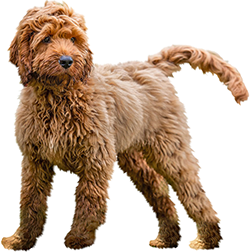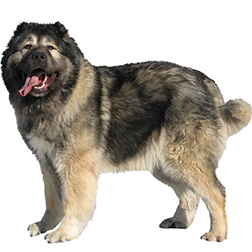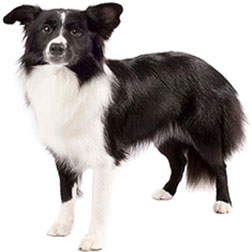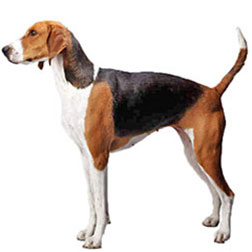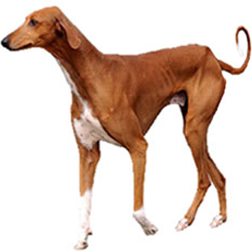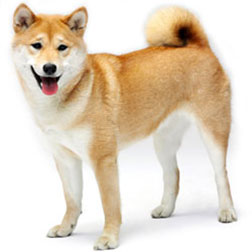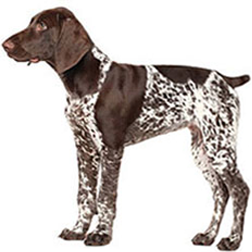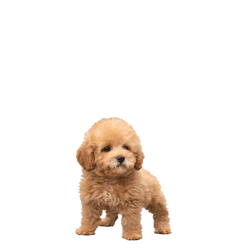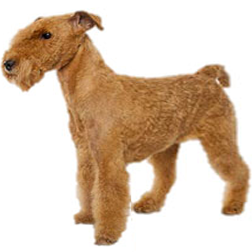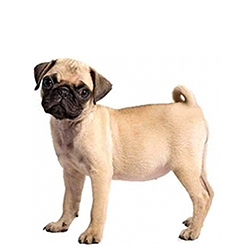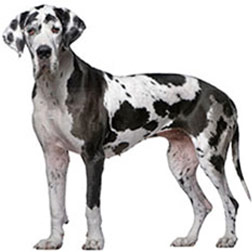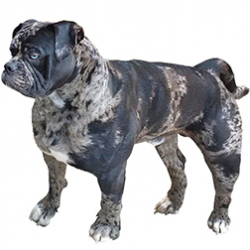Ultimate Guide to the Dog Groups
Welcome to the World of Dogs
Dogs have been our steadfast companions for thousands of years, enriching our lives with their loyalty, love, and boundless energy. From the tiny Chihuahua to the towering Great Dane, the diversity among dog breeds is a testament to the profound bond shared between humans and their four-legged friends. Every wag of a tail and soulful gaze speaks of a connection that transcends language and culture. This guide is your doorway into the enchanting world of dogs, designed to celebrate their unique place in our lives and to share the wealth of knowledge that comes with being part of the American Breeder Community.
At American Breeder, we believe that every dog deserves a home filled with love and understanding. Our mission is to connect responsible breeders with informed and compassionate buyers. Together, we can foster ethical breeding practices that prioritize the health and happiness of our canine companions. Whether you are a seasoned breeder, a first-time dog owner, or simply an enthusiast eager to learn more, this guide is your trusted companion on the journey of understanding and celebrating dogs.
Why This Guide Matters
The world of dogs is as vast as it is fascinating, encompassing countless breeds, behaviors, and stories. For new dog enthusiasts, the sheer volume of information can be overwhelming. How do you choose the right breed? What are the critical aspects of dog care and training? How do kennel clubs and breed standards influence the dogs we know today? This guide aims to answer these questions and more, serving as a comprehensive resource for anyone passionate about dogs.
For seasoned enthusiasts, this guide offers fresh perspectives and in-depth explorations of topics that may be familiar but are always worth revisiting. From the science of canine genetics to the art of training and grooming, each chapter delves deeply into its subject, ensuring that even the most knowledgeable reader finds something new to discover.
Moreover, this guide underscores the importance of making informed decisions. Choosing a dog is a lifelong commitment, and understanding a breed’s characteristics, needs, and history is essential to ensuring a harmonious relationship. By equipping readers with accurate and detailed information, we aim to create a world where every dog is cherished and understood.
So, whether you’re seeking a playful puppy to join your family, exploring the intricate dynamics of breeding, or simply marveling at the incredible bond between humans and dogs, this guide is here to inspire and inform. Welcome to the ultimate reference for all things canine. Together, let’s embark on a journey that celebrates the unparalleled joy of dogs.
The History and Evolution of Dogs
From Wolves to Companions
The story of how wolves became our beloved dogs is a tale of survival, mutual benefit, and enduring partnership. Thousands of years ago, early humans and wolves formed a symbiotic relationship. Wolves, attracted to the scraps left behind by human settlements, began to integrate themselves into human society. Over time, the tamest wolves were selectively bred, paving the way for the first domesticated dogs.
This evolutionary journey wasn’t merely about convenience; it was transformative for both species. Early dogs provided protection, assisted in hunting, and even served as companions. Milestones in domestication include the development of distinct breeds tailored to specific tasks, from herding livestock to guarding homes. These milestones reflect the growing bond between humans and dogs and the shaping of modern breeds that we recognize today.
Throughout history, dogs have played significant roles in various cultures. In ancient Egypt, they were revered and often depicted in art as loyal companions. In Asia, certain breeds were cherished as symbols of royalty and good fortune. Across Europe, dogs became indispensable in hunting and farming. This shared history underscores the universal importance of dogs in human society.
Dogs in Society Throughout History
The bond between humans and dogs is unparalleled in the animal kingdom. For centuries, dogs have served as protectors, workers, and companions. They’ve guarded our homes, herded our livestock, and stood by our sides in both joyous and challenging times. This unique relationship has solidified their place as "man’s best friend."
Dogs’ roles have evolved alongside human society. In medieval times, they were hunters and protectors; during the industrial revolution, they became symbols of status and luxury. In modern times, dogs are not only pets but also service animals, assisting people with disabilities and even providing emotional support. Their adaptability and unwavering loyalty make them indispensable members of our communities.
Why have dogs earned such a special place in our hearts? It’s their ability to connect with us on a deeply emotional level. A dog’s unconditional love, combined with their willingness to share in our joys and sorrows, cements their status as our most cherished companions. Through every era and across every culture, dogs have proven to be much more than animals; they are true partners in the human journey.
Understanding Dog Breeds and Groups
The Evolution of Breeds
The incredible variety of dog breeds we see today is a result of millennia of domestication and selective breeding. Humans have shaped dogs to fulfill specific roles, whether for hunting, herding, guarding, or companionship. This deliberate selection of traits has resulted in breeds with distinct physical and behavioral characteristics, suited to their intended purposes. From the keen senses of scent hounds to the herding instincts of collies, each breed’s evolution tells a story of adaptation and utility.
Selective breeding has also brought about dogs that excel in unique environments. Arctic breeds like Siberian Huskies are built for endurance in cold climates, while sighthounds such as Greyhounds are optimized for speed and agility. These adaptations demonstrate the remarkable ways in which dogs have evolved alongside humans, catering to our diverse needs and lifestyles.
What Are Dog Groups?
Breed classification systems, such as those established by the American Kennel Club (AKC), United Kennel Club (UKC), and Fédération Cynologique Internationale (FCI), group breeds based on their historical roles and characteristics. The AKC, for instance, categorizes dogs into Sporting, Hound, Working, Terrier, Toy, Non-Sporting, Herding, and Miscellaneous groups. Each group represents a unique set of traits and functions, from the athleticism of Sporting dogs to the diminutive charm of Toy breeds.
Understanding these groups helps dog owners and enthusiasts appreciate the diverse roles dogs have played throughout history. For example, Working breeds like Mastiffs and Rottweilers have been stalwart protectors, while Sporting breeds such as Retrievers excel in hunting and retrieving game. This grouping system not only preserves the heritage of individual breeds but also aids prospective owners in selecting a breed that aligns with their lifestyle and preferences.
Popular Breeds and Their Traits
Delving into breed groups reveals a fascinating array of characteristics. Sporting dogs, such as Labrador Retrievers and Spaniels, are energetic and eager to please, making them ideal for active families. Hounds, known for their keen sense of smell and tracking abilities, are excellent companions for outdoor enthusiasts. Toy breeds like Chihuahuas and Pomeranians, on the other hand, offer big personalities in small packages, perfect for city living.
The distinction between purebred and mixed-breed dogs often sparks debate, but both have their merits. Purebred dogs provide predictability in traits and behavior, while mixed breeds often boast hybrid vigor, with fewer breed-specific health issues. Whether purebred or mixed, the most important consideration is understanding a dog’s unique needs and ensuring they fit well with their owner’s lifestyle.
Non-Recognized and Emerging Groups
Beyond the established groups, new categories of dogs are gaining recognition. Teacup breeds, designer crossbreeds, and rare or ancient breeds highlight the ever-evolving nature of canine companionship. Designer breeds like Labradoodles and Pomskies combine traits of two distinct breeds, often aiming to balance desirable characteristics like hypoallergenic coats with friendly temperaments.
Rare and ancient breeds, such as the Saluki and Thai Ridgeback, offer a glimpse into the diverse history of dogs. These breeds, often less common, possess unique traits and histories that set them apart. Whether you’re drawn to a traditional working breed or a modern designer crossbreed, the world of dogs offers endless possibilities to explore and admire.
Choosing the Perfect Dog
Matching Lifestyle to Breed
Selecting the right dog starts with an honest assessment of your lifestyle. Factors such as energy levels, temperament, size, and space requirements play a critical role in determining which breed will thrive in your home. High-energy breeds like Border Collies or Huskies require ample exercise and mental stimulation, while more laid-back breeds such as Bulldogs are better suited for quieter lifestyles. By matching a breed’s needs with your daily routine, you set the foundation for a harmonious relationship.
Using tools like online quizzes or consulting with breed experts can provide valuable insights into potential matches. These resources help narrow down the choices by focusing on specific traits that align with your preferences and living conditions. Ultimately, taking the time to research and reflect ensures that both you and your future dog are set up for success.
Understanding Breed Traits
Every breed has unique traits that make it special, but it’s essential to balance these strengths with potential challenges. For instance, the intelligence of a German Shepherd makes it an excellent working dog, but it also demands consistent training and engagement to prevent boredom. Dispelling myths—such as assuming small breeds are always easier to manage or that all large breeds are aggressive—is crucial in making an informed choice.
By understanding a breed’s quirks, you can anticipate its needs and behaviors. Some breeds are more vocal, while others may have strong prey drives or specific grooming requirements. Appreciating these nuances allows you to create an environment where your dog feels understood and supported.
Connecting with Ethical Breeders
Finding the right dog also means connecting with responsible breeders who prioritize the health and well-being of their animals. Ethical breeders conduct health screenings, provide clean and nurturing environments, and are transparent about their breeding practices. Avoid breeders who cut corners, fail to provide necessary documentation, or prioritize profit over the dogs’ welfare.
The American Breeder platform is a valuable resource for identifying reputable breeders. With tools to verify credentials and reviews from other buyers, the platform ensures you can make an informed decision. Building a relationship with a trusted breeder not only guarantees a healthier dog but also offers ongoing support as you navigate the joys and challenges of dog ownership.
Caring for Your Dog
Basics of Dog Health and Nutrition
A dog’s health starts with a nutritious and balanced diet. Different breeds, ages, and activity levels require specific dietary considerations. Puppies, for example, need nutrient-dense food to support rapid growth, while senior dogs may require a diet lower in calories but rich in joint-supporting supplements. High-quality commercial dog foods, whether kibble or wet, provide a convenient and balanced option, but home-prepared meals can be an alternative if designed under veterinary guidance.
Preventative healthcare is equally essential. Routine veterinary check-ups help detect issues early, and vaccinations protect against life-threatening diseases like rabies, distemper, and parvovirus. Regular parasite prevention, including treatments for fleas, ticks, and worms, is critical for your dog’s health and comfort. Staying on top of your dog’s health needs ensures a long, happy, and healthy life.
Grooming and Physical Care
Grooming is vital to maintaining your dog’s physical health. Breed-specific needs play a significant role in how often and what type of grooming is required. Dogs with long, flowing coats, such as Afghan Hounds, benefit from daily brushing to prevent matting, while short-haired breeds like Beagles require less frequent attention but still benefit from regular maintenance.
Dental care is often overlooked but plays a crucial role in preventing oral diseases that can affect overall health. Brushing your dog’s teeth with vet-approved toothpaste and providing dental chews can help maintain oral hygiene. Nail trimming is another essential aspect of grooming, ensuring that nails do not become overgrown, which can cause discomfort or difficulty walking. Regular vet visits for check-ups and grooming keep your dog in excellent physical condition.
Exercise and Mental Stimulation
Exercise is crucial to a dog’s well-being, with different breeds having varying energy requirements. High-energy breeds like Border Collies or Jack Russell Terriers thrive on activities like running, agility training, or long hikes, while low-energy breeds such as Bulldogs enjoy leisurely walks. Regular exercise prevents obesity, strengthens muscles, and provides mental stimulation.
Mental stimulation is just as important as physical activity. Puzzle toys, interactive games, and training sessions challenge your dog’s mind and prevent boredom. Tailoring activities to your dog’s breed and personality ensures they remain engaged and content. An active and mentally stimulated dog is a happy and well-adjusted companion.
Training and Socialization
Key Principles of Dog Training
Training your dog is not only essential for good behavior but also fosters a strong bond between you and your canine companion. Understanding and applying the following principles can make the process effective and enjoyable:
Positive Reinforcement and Consistency
- Reward-Based Learning: Dogs thrive on positive reinforcement. Reward desirable behaviors with treats, praise, or playtime to encourage repetition.
- Timing Is Everything: Provide rewards immediately after the desired behavior to help your dog associate the action with the reward.
- Consistency: Ensure all members of your household use the same commands and rewards. Mixed signals can confuse your dog and hinder progress.
- Patience and Persistence: Training takes time, and setbacks are normal. Stay patient and continue working with your dog.
Training Techniques for Common Behaviors
- Basic Commands: Teach foundational commands like "sit," "stay," "come," and "leave it." Start with short, focused sessions to keep your dog engaged.
- Leash Training: Encourage your dog to walk calmly on a leash by stopping when they pull and rewarding them when they stay close to you.
- Potty Training: Establish a routine for bathroom breaks and use a consistent command like "go potty." Reward your dog immediately after success.
- Reducing Problem Behaviors: Address unwanted behaviors, such as jumping or barking, by redirecting your dog’s attention to a positive activity.
Socialization for Development
Socialization is crucial for a dog’s emotional well-being and ability to adapt to various situations. Early and continuous socialization helps prevent fear and aggression and builds confidence.
Importance of Early and Ongoing Socialization
- Critical Period: Puppies experience a sensitive socialization window from 3 to 14 weeks of age. Positive experiences during this time shape their future behavior.
- Lifelong Process: Socialization doesn’t stop after puppyhood. Regular exposure to new people, animals, and environments ensures your dog remains well-adjusted.
Tips for Introducing Dogs to New Environments and Companions
- Start Small: Begin with calm, controlled environments and gradually introduce more stimulation as your dog becomes comfortable.
- Observe Body Language: Pay attention to your dog’s signals. Tail wagging, relaxed ears, and soft eyes indicate comfort, while tense body language suggests stress.
- Positive Experiences: Reward your dog for calm and curious behavior in new situations to create positive associations.
- Slow Introductions: When meeting new dogs, keep the initial interaction brief and on neutral territory. Use leashes for control but allow natural sniffing and interaction.
- Desensitize to Triggers: Gradually expose your dog to potentially intimidating stimuli, such as loud noises or crowds, paired with treats and praise.
By focusing on consistent training and comprehensive socialization, you’re setting your dog up for a lifetime of positive interactions and well-behaved companionship. The effort you invest today will pay dividends in a happy, well-adjusted canine partner.
Dogs in Modern Society
Roles Dogs Play Today
Dogs have become integral to modern life, taking on a variety of roles that highlight their intelligence, loyalty, and versatility:
Companions, Service Dogs, Therapy Dogs, and Working Dogs
- Companions: Dogs provide emotional support and enrich daily life for millions of households worldwide.
- Service Dogs: Specially trained to assist individuals with disabilities, service dogs perform tasks such as guiding the visually impaired, alerting to medical conditions, and aiding mobility.
- Therapy Dogs: These dogs offer comfort and emotional support in settings like hospitals, schools, and disaster zones.
- Working Dogs: Employed in roles such as herding livestock, protecting property, or serving in police and military operations.
Unique Jobs: Truffle Hunting, Rescue Missions, and More
- Truffle Hunting: Certain breeds are trained to locate rare truffles, a prized delicacy.
- Search and Rescue: Dogs are invaluable in finding missing persons during natural disasters or emergencies.
- Detection Dogs: Trained to sniff out contraband, explosives, or even diseases like cancer.
Trends in Dog Ownership
Modern trends in dog ownership reflect evolving priorities and lifestyles:
Increased Focus on Mental Well-Being and Ethical Breeding
- Mental Health Benefits: Recognizing the role of dogs in reducing stress and improving mental health has led to increased adoption.
- Ethical Breeding Practices: Awareness about overbreeding and puppy mills has spurred demand for ethical breeding and adoption from shelters.
Urban Challenges and Solutions for Dog Care
- Space Constraints: City living often means smaller living spaces and fewer outdoor areas. Dog owners have adapted with indoor training, dog parks, and daycare services.
- Time Management: Busy schedules have increased reliance on dog walkers, pet sitters, and automated feeders.
Challenges of Dog Ownership
While rewarding, dog ownership comes with responsibilities that should not be underestimated:
Time, Financial Commitment, and Emotional Responsibilities
- Time Commitment: Dogs require daily care, exercise, training, and attention, which can be demanding.
- Financial Costs: Veterinary care, food, grooming, and supplies can add up significantly over a dog’s lifetime.
- Emotional Responsibilities: Dogs depend on their owners for love, companionship, and stability. Owners must be prepared for the emotional investment, including the pain of loss when a dog passes away.
Understanding these roles, trends, and challenges ensures a deeper appreciation for the profound impact dogs have on modern society and helps potential dog owners prepare for a lifetime commitment.
Fun and Fascinating Insights
Dogs in History and Pop Culture
Dogs have left their pawprints on history and pop culture, capturing hearts and inspiring stories across generations:
Legendary and Heroic Dogs
- Hachiko: Known for his unwavering loyalty, Hachiko waited daily at a train station for his deceased owner, becoming a symbol of devotion.
- Balto: The Siberian Husky who led a life-saving mission to deliver medicine during the 1925 diphtheria outbreak in Alaska.
- Laika: The first dog in space, Laika paved the way for human space exploration, representing courage and sacrifice.
Iconic Breeds in Movies, Books, and Folklore
- Lassie: The intelligent and brave Rough Collie who starred in books, TV shows, and movies, symbolizing loyalty and heroism.
- Toto: Dorothy’s faithful companion in The Wizard of Oz, embodying the unbreakable bond between owner and dog.
- Mythical Dogs: Cerberus, the three-headed dog of Greek mythology, and Garmr, the Norse guardian of Hel’s gate, highlight dogs’ roles in ancient legends.
Unusual Dog Jobs
Dogs are known for their versatility and have taken on unique roles beyond traditional tasks:
- Truffle Hunting: Dogs with keen noses locate these valuable fungi, supporting gourmet industries.
- Sled Racing: Breeds like Alaskan Malamutes and Siberian Huskies excel in endurance races such as the Iditarod.
- Cadaver Dogs: Trained to detect human remains, aiding law enforcement in investigations.
Breed-Specific Legends and Trivia
Certain breeds have fascinating histories and stories:
- Greyhounds: Among the oldest dog breeds, Greyhounds were revered in Ancient Egypt and often depicted in art.
- Beagles: Known for their exceptional scenting abilities, Beagles have even been employed to detect bedbugs in hotels.
- Record-Breaking Dogs: The Great Dane, Zeus, holds the record as the tallest dog, and a Border Collie named Chaser learned over 1,000 words, showcasing incredible intelligence.
From their historic deeds to their modern roles, dogs continue to amaze and inspire, proving they are more than just pets—they are icons of companionship and capability
Kennel Clubs and Breed Standards
The Role of Kennel Clubs
Kennel clubs play a pivotal role in maintaining breed standards, promoting responsible breeding practices, and fostering a global community of dog enthusiasts:
How Standards Are Established and Maintained
- Defining Breed Traits: Kennel clubs establish specific standards for each breed, outlining traits like size, coat type, and temperament.
- Evaluation and Shows: Dogs are evaluated in competitions to ensure they meet breed standards, encouraging breeders to maintain high-quality practices.
- Genetic Health: Clubs advocate for genetic testing and ethical breeding to prevent hereditary health issues.
Prominent Kennel Clubs and Their Missions
- American Kennel Club (AKC): Focused on promoting purebred dogs, responsible ownership, and canine health initiatives in the United States.
- United Kennel Club (UKC): Emphasizes performance and working abilities in addition to conformation.
- Fédération Cynologique Internationale (FCI): A global organization that coordinates breed standards and events across member countries.
AKC Foundation Stock Service (FSS)
The AKC’s Foundation Stock Service supports the recognition and preservation of rare and emerging breeds:
Introduction to FSS and Its Purpose
- Preservation of Rare Breeds: The FSS provides a pathway for rare breeds to gain AKC recognition while ensuring their unique traits are preserved.
- Maintaining Records: The service tracks pedigrees and breed data to support responsible breeding.
Rare and Emerging Breeds Seeking Recognition
- Examples of Emerging Breeds: Dogs like the Azawakh, a slender hunting breed from West Africa, and the American Leopard Hound, prized for its versatility, are gaining recognition.
- Cultural Heritage: Recognizing these breeds highlights their historical and cultural significance, enriching the canine world.
Kennel clubs and their programs ensure that the diversity, health, and legacy of dog breeds are celebrated and protected for generations to come
Community and Resources
Connecting with Breeders and Dog Enthusiasts
Building a network with breeders and fellow dog lovers enriches the dog ownership experience:
Tools for Connecting Buyers with Ethical Breeders
- Online Directories: Use reputable websites to find breeders who prioritize health and responsible practices.
- American Breeder Resources: Leverage the platform’s tools to connect with certified and ethical breeders.
Engaging in Community Events and Dog Shows
- Local Events: Attend community dog events and expos to meet other enthusiasts and learn more about different breeds.
- Dog Shows: Participate in or spectate at dog shows to appreciate breed standards and foster connections within the canine community.
Further Learning
Expand your knowledge to become a more informed dog owner:
Recommended Books, Blogs, and Resources
- Books: Explore comprehensive guides on dog care, training, and breed-specific knowledge.
- Blogs: Follow blogs that offer expert insights, training tips, and breed information.
- Community Forums: Join forums to exchange ideas, ask questions, and share experiences.
Utilizing American Breeder as a Hub for Dog-Related Knowledge
- Centralized Resources: Access articles, FAQs, and directories tailored to various aspects of dog ownership.
- Educational Tools: Discover training videos, care guides, and breed comparison tools all in one place.
Interactive and Visual Features
Engaging tools make learning about dogs fun and accessible:
Breed Comparison Charts and Infographics
- Visual Guides: Compare sizes, temperaments, and care needs of different breeds at a glance.
- Interactive Features: Use digital tools to explore and contrast breeds based on your preferences.
“Did You Know?” Trivia and Testimonials
- Fun Facts: Discover interesting trivia about breeds, historical dogs, and unusual canine abilities.
- Testimonials: Read real stories from dog owners sharing their experiences and tips.
Vibrant Images and Videos Showcasing Breeds and Care Tips
- Visual Content: Browse galleries of professional photos and videos to better understand breed characteristics and care techniques.
- How-To Clips: Watch step-by-step demonstrations on training, grooming, and other essential skills.
Conclusion: Celebrating Dogs
Reflecting on the Joy and Diversity Dogs Bring to Life
Dogs have enriched human lives for centuries with their loyalty, love, and versatility. From the playful antics of a puppy to the dependable companionship of a senior dog, they provide joy in countless ways. The diversity among breeds showcases their unique abilities, appearances, and personalities, proving there is a perfect dog for every individual or family.
Encouraging Responsible Ownership and Continued Learning
Owning a dog is a commitment that requires time, effort, and dedication. By prioritizing responsible ownership, including proper training, socialization, and care, dog owners can ensure a fulfilling relationship for both themselves and their pets. Continuing to learn about breeds, health care, and behavior fosters a deeper understanding and appreciation of these remarkable animals.
Reaffirming American Breeder’s Mission
At American Breeder, we are dedicated to promoting ethical breeding practices and empowering individuals with the knowledge needed to make informed decisions. Our mission is to connect dog lovers, provide reliable resources, and celebrate the unique bond between humans and dogs. Together, we can create a community that values and supports the well-being of every dog.
Did You Enjoy this Article? Share it and Help Us Spread the Word!
If you found this article helpful, we'd appreciate it if you could share it with your friends or link to it from your website, blog, or group! You can also use the convenient social share tabs on the left side of the screen to instantly share this page to your social media feed. For more ways to support and promote the American Breeder Community, visit our Share & Promote Together page for social media posts and memes you can copy and share. Your support means the world to us!
Disclaimer: The information provided in this article is for general informational purposes only and does not constitute legal, medical, financial, or professional advice. While we strive for accuracy, we make no representations or warranties regarding the completeness, accuracy, reliability, or suitability of the information. Please consult with a professional before making decisions based on the content provided. American Breeder Inc. assumes no responsibility for any errors or omissions or for the results obtained from the use of this information.

